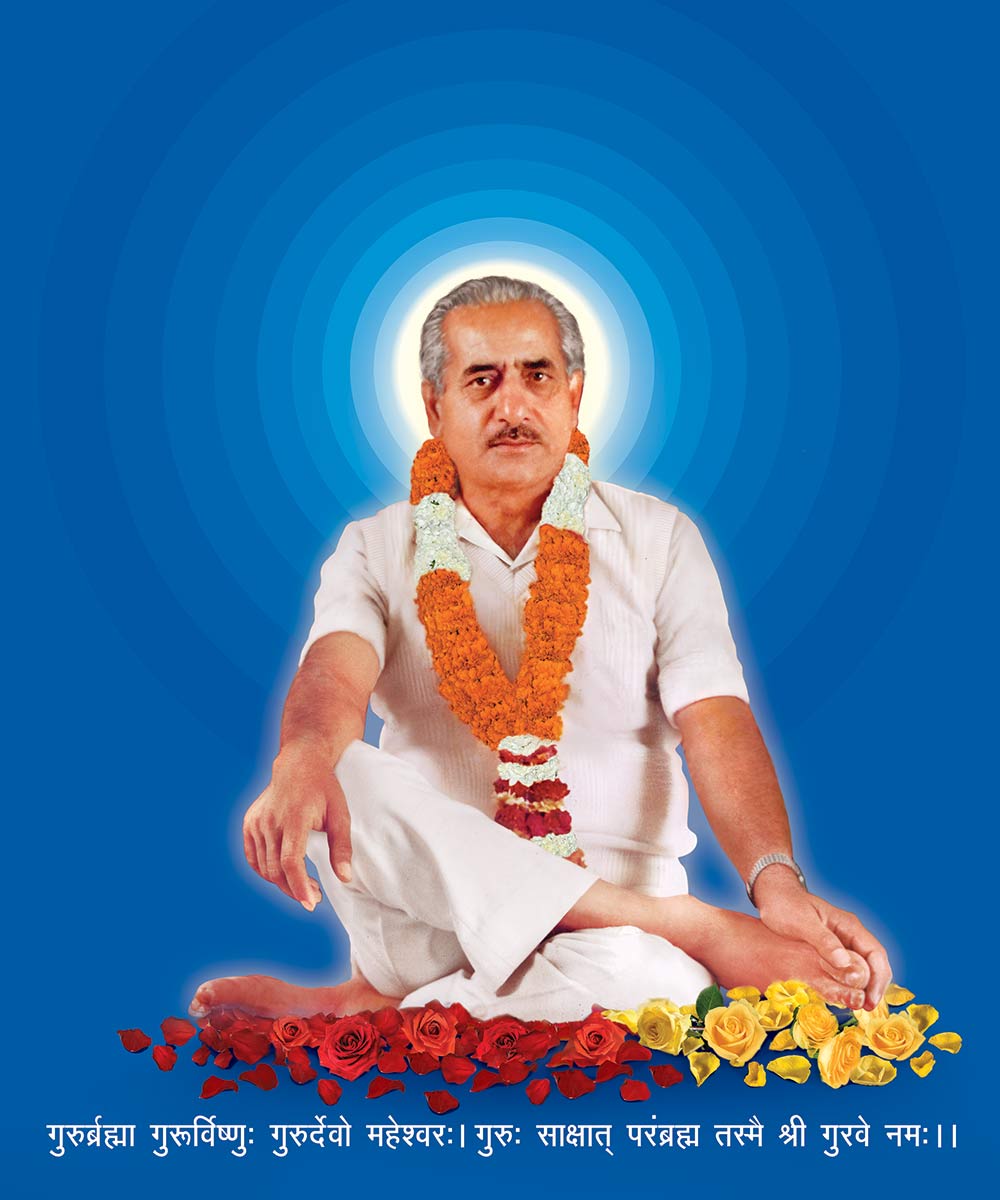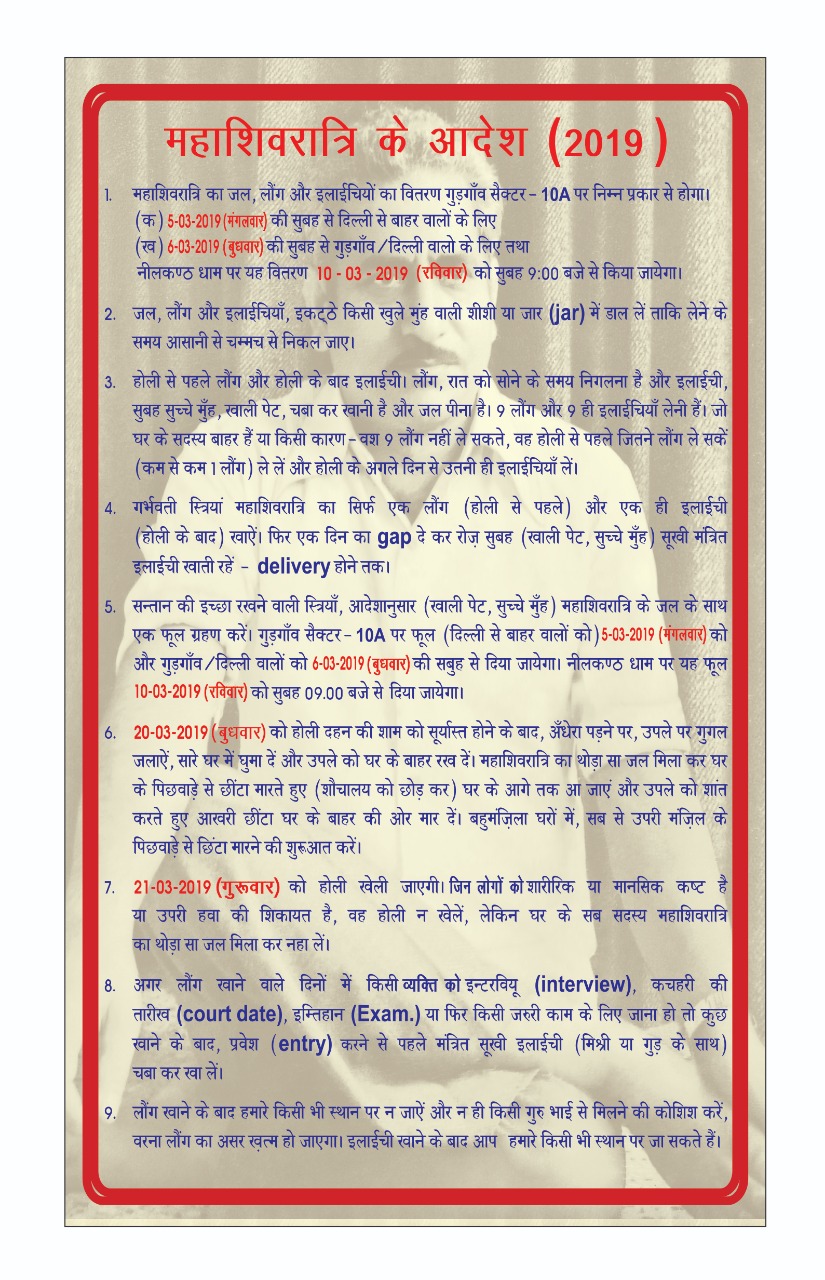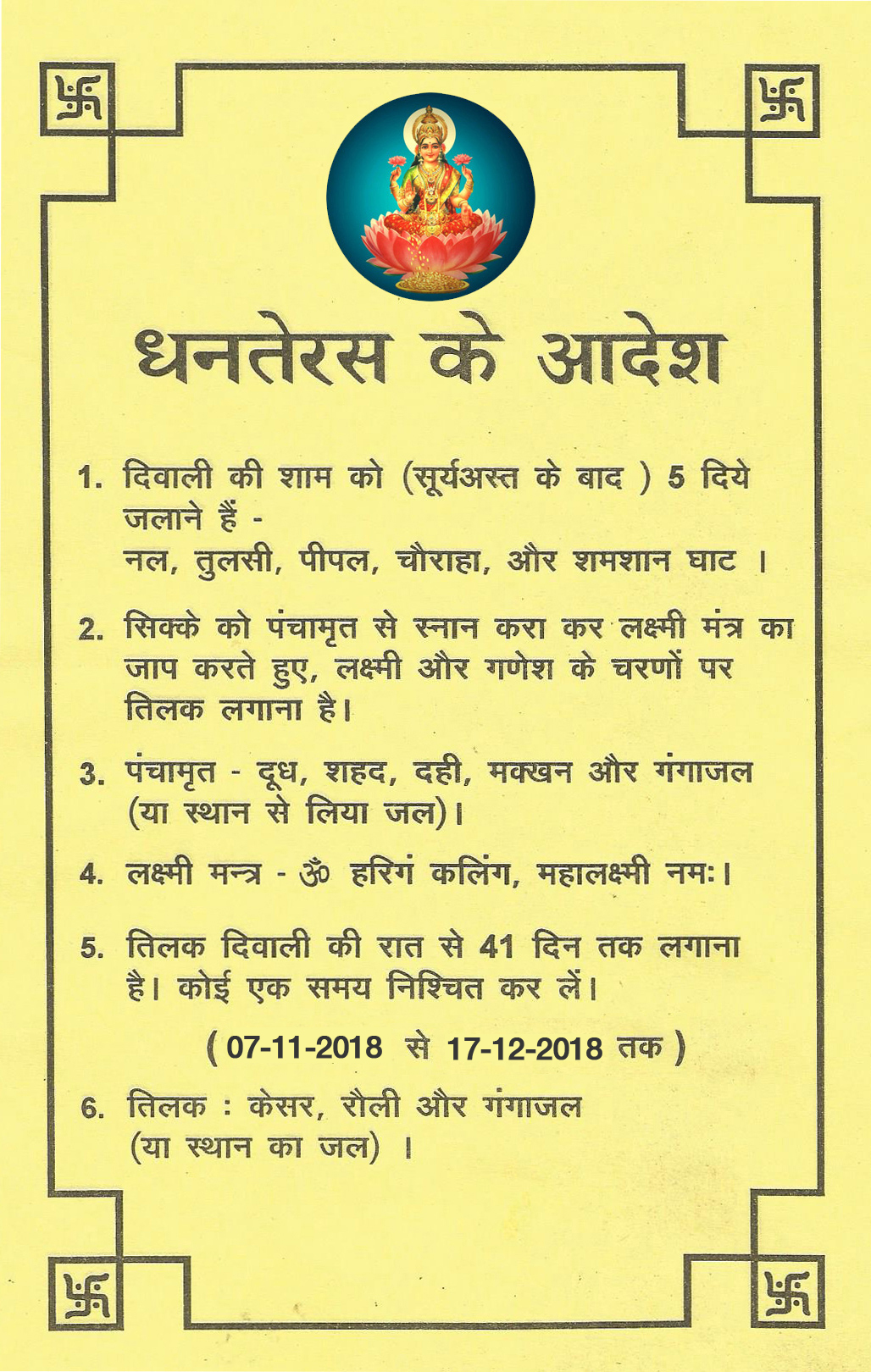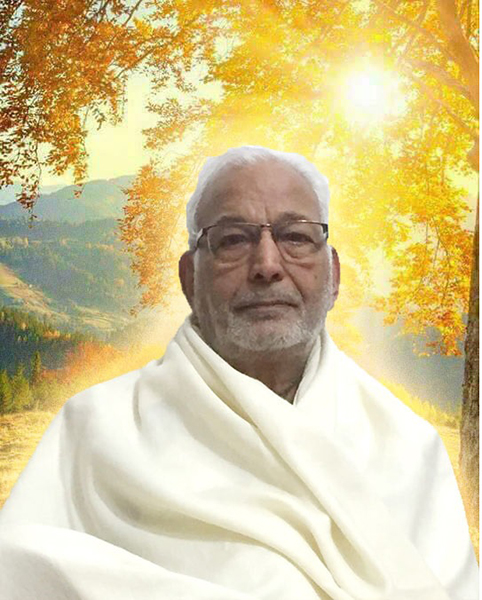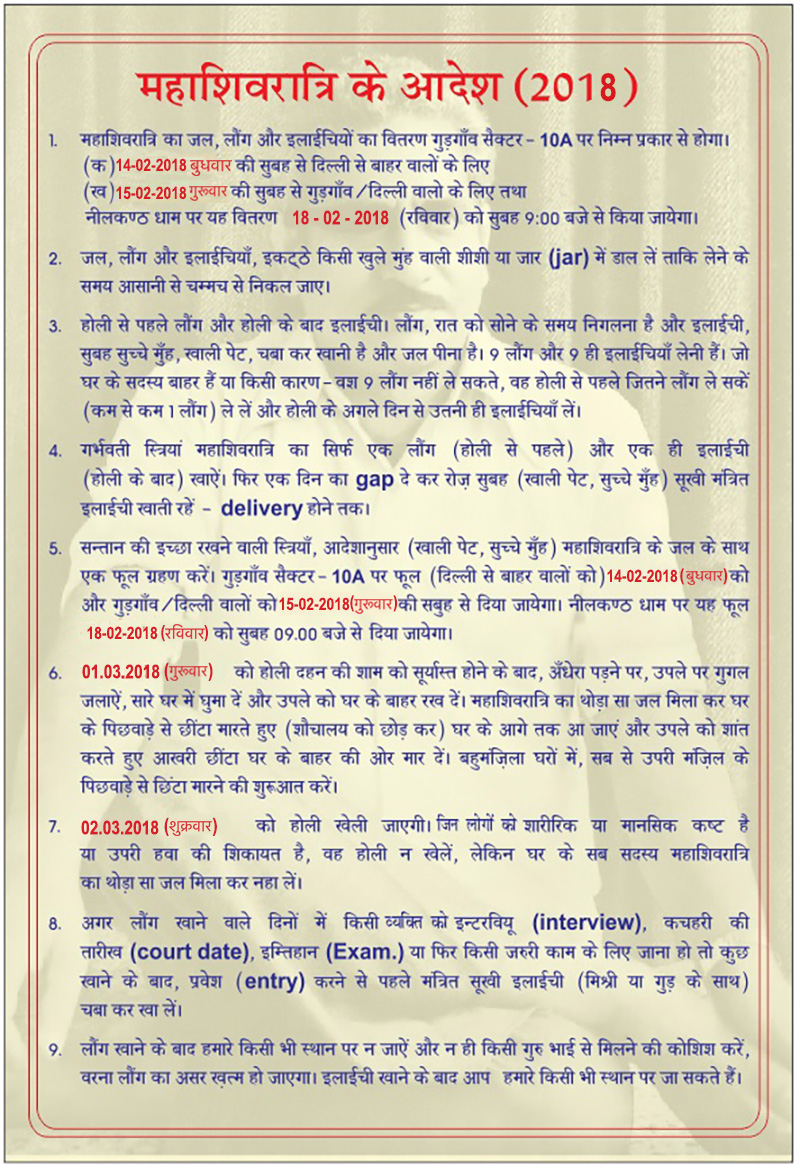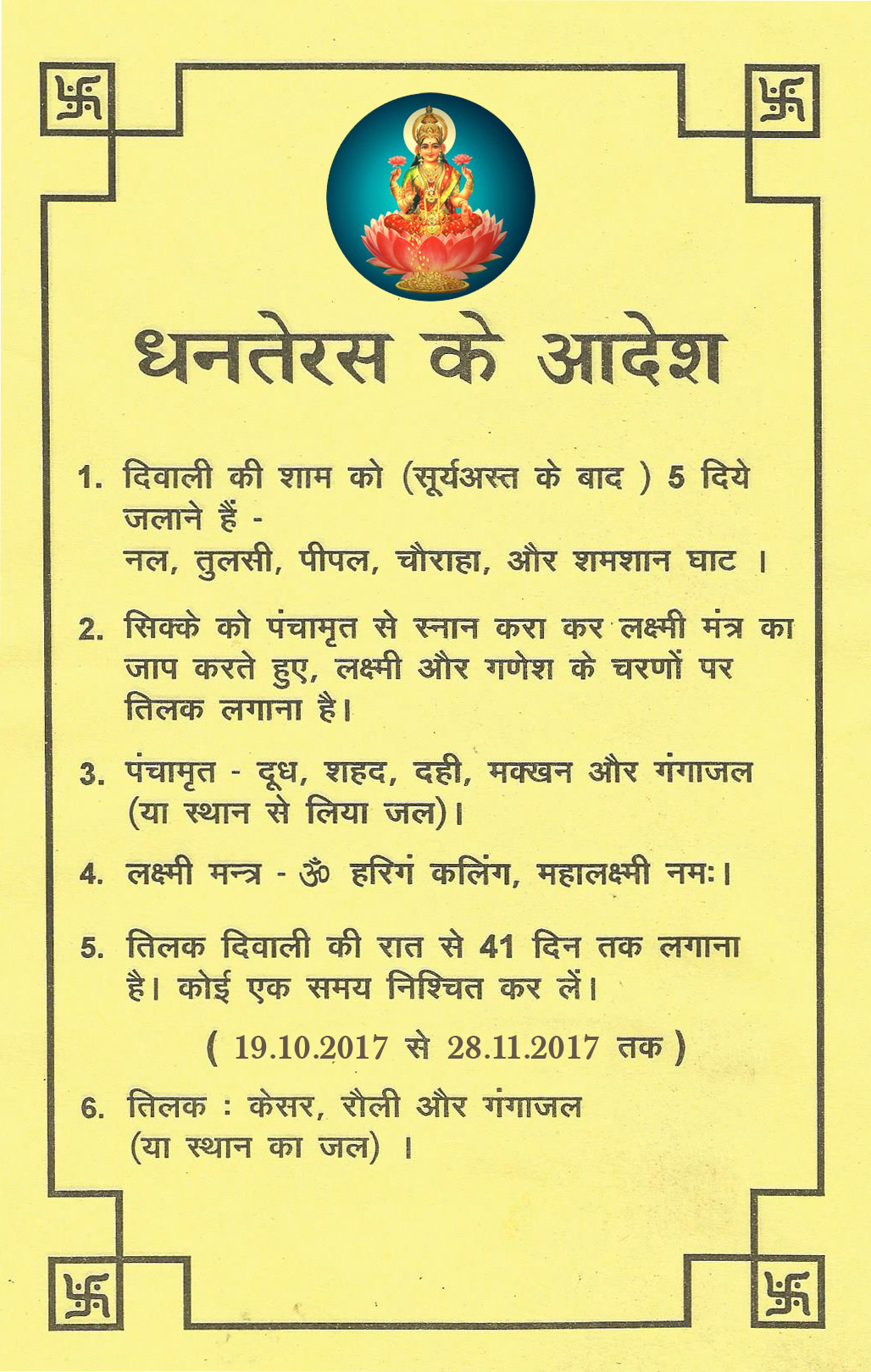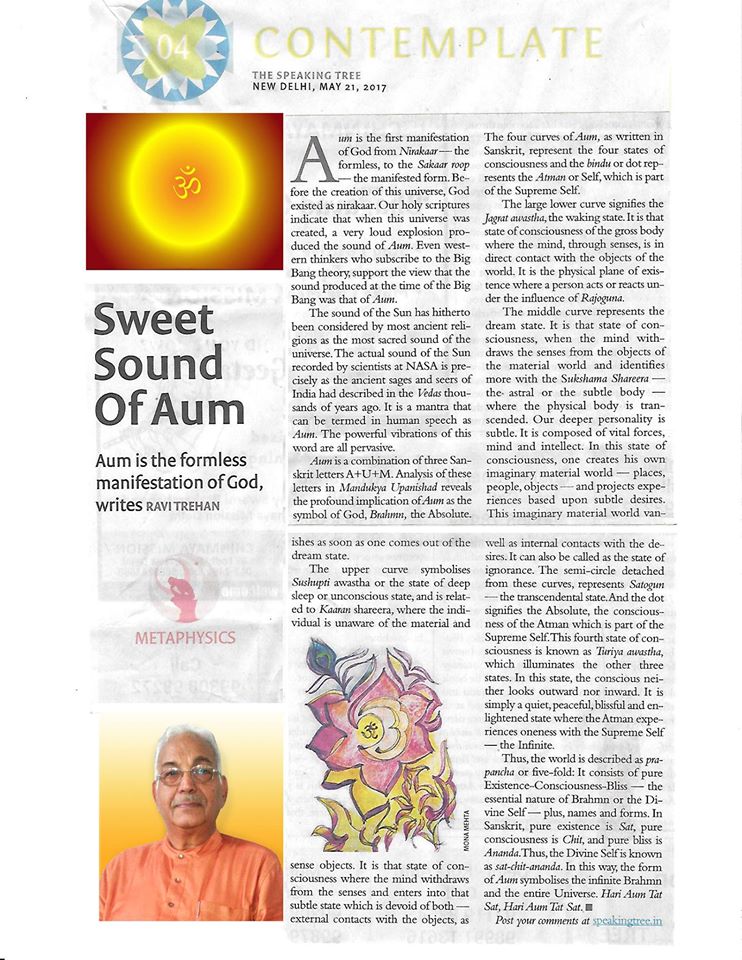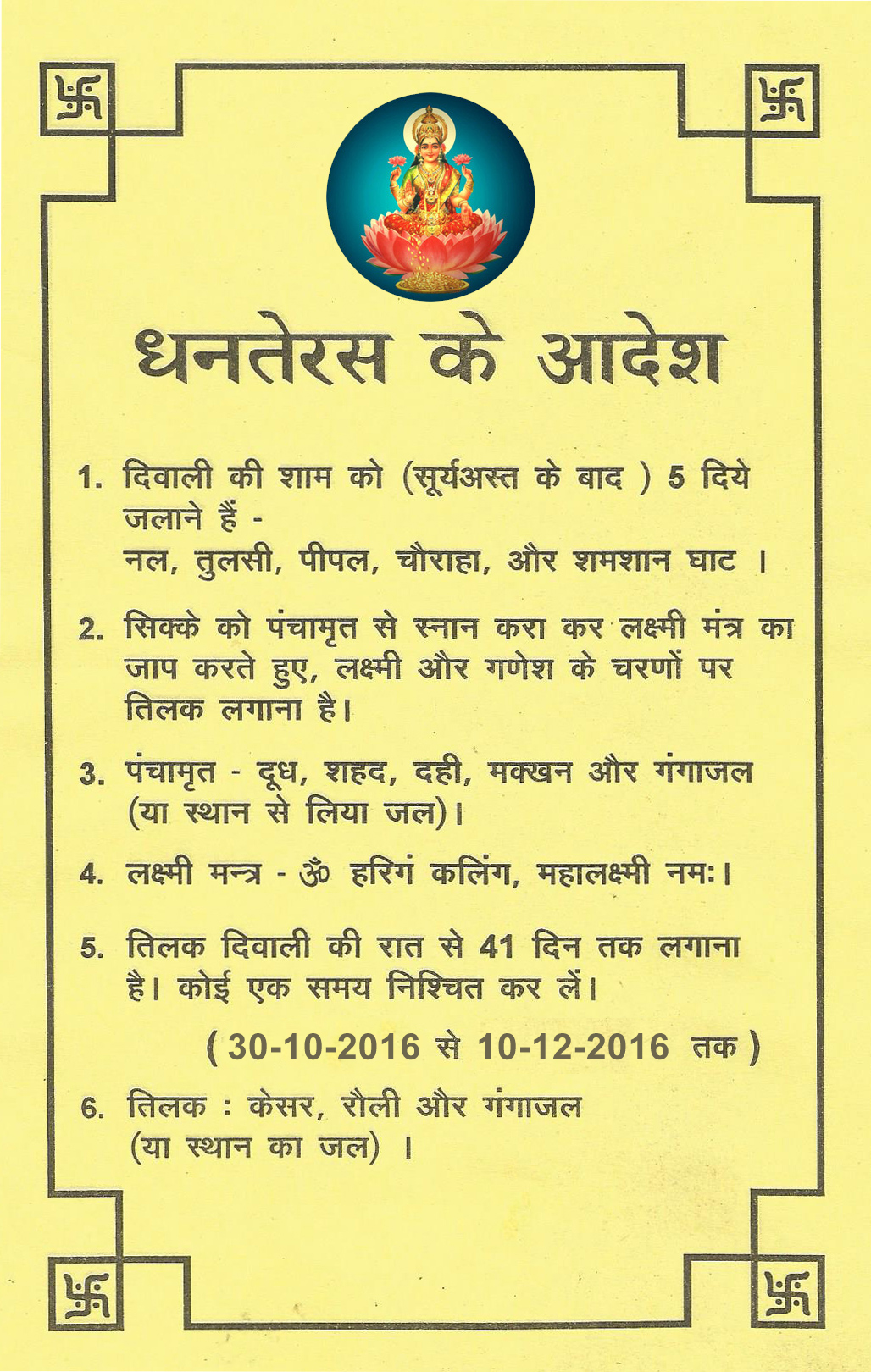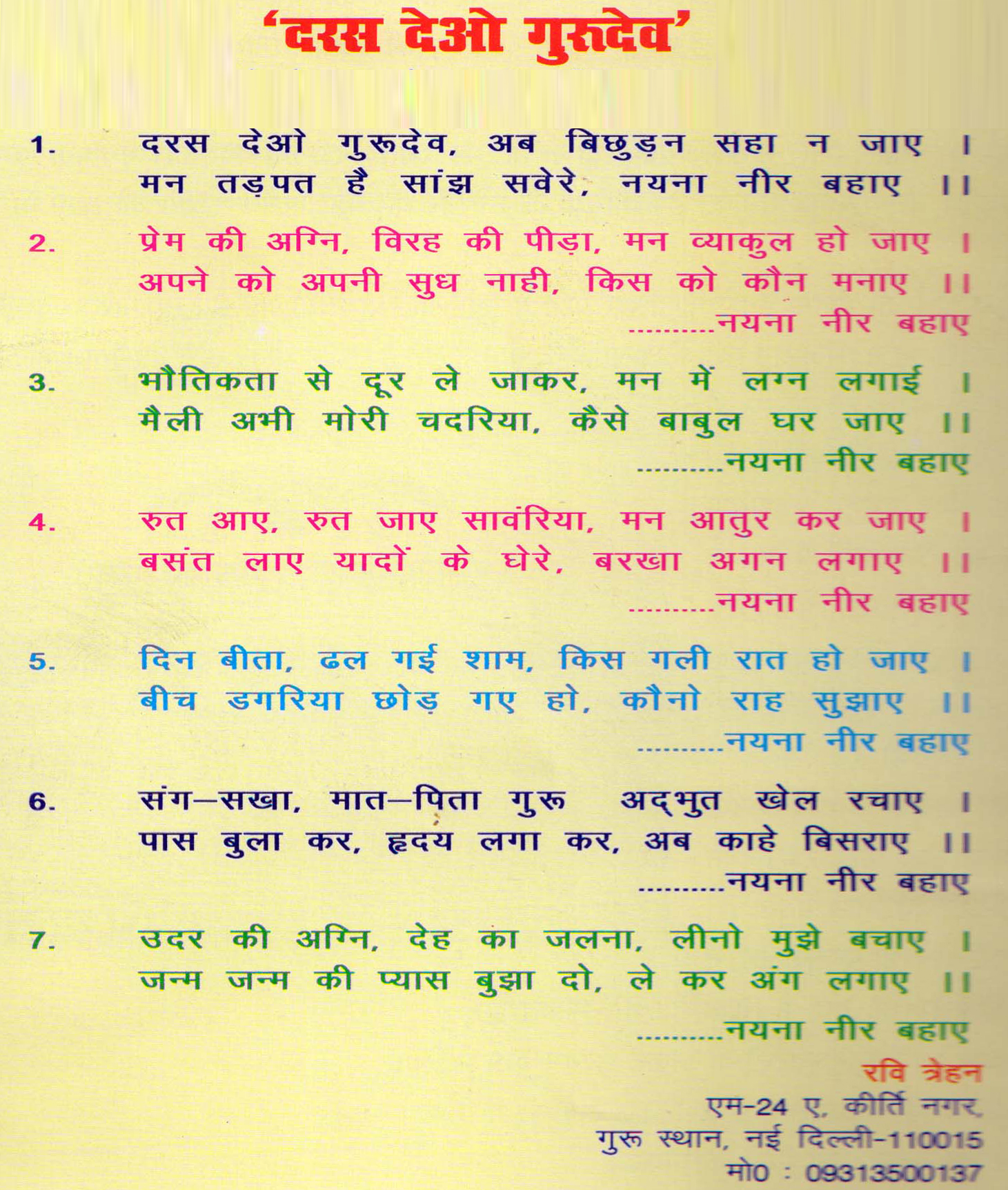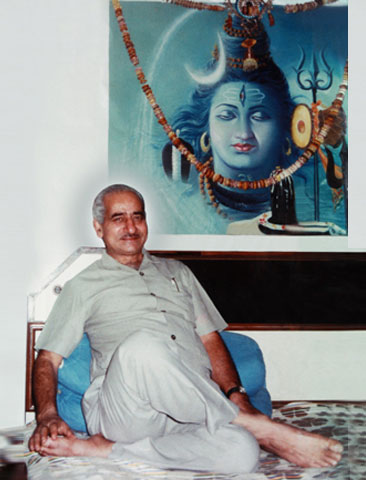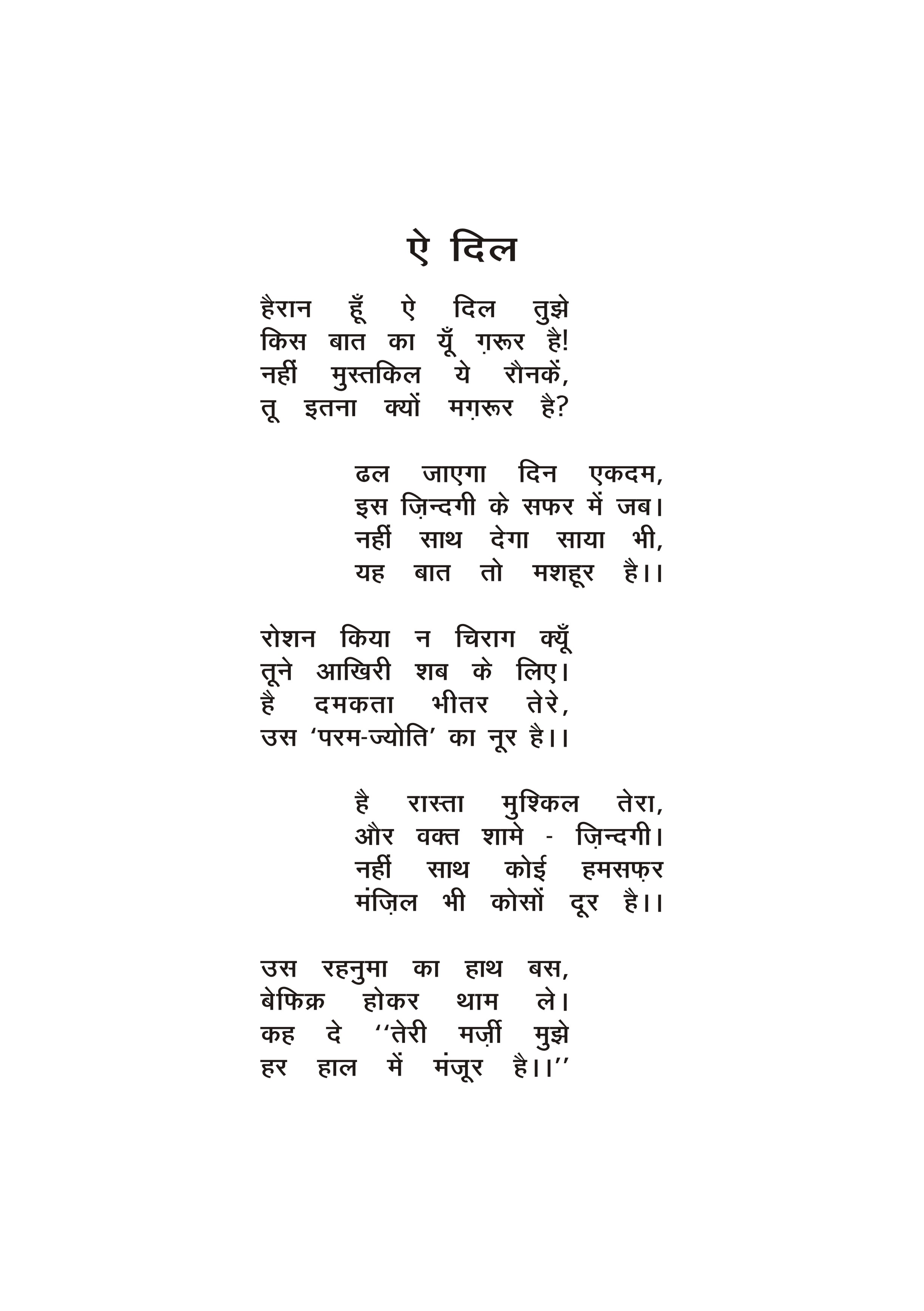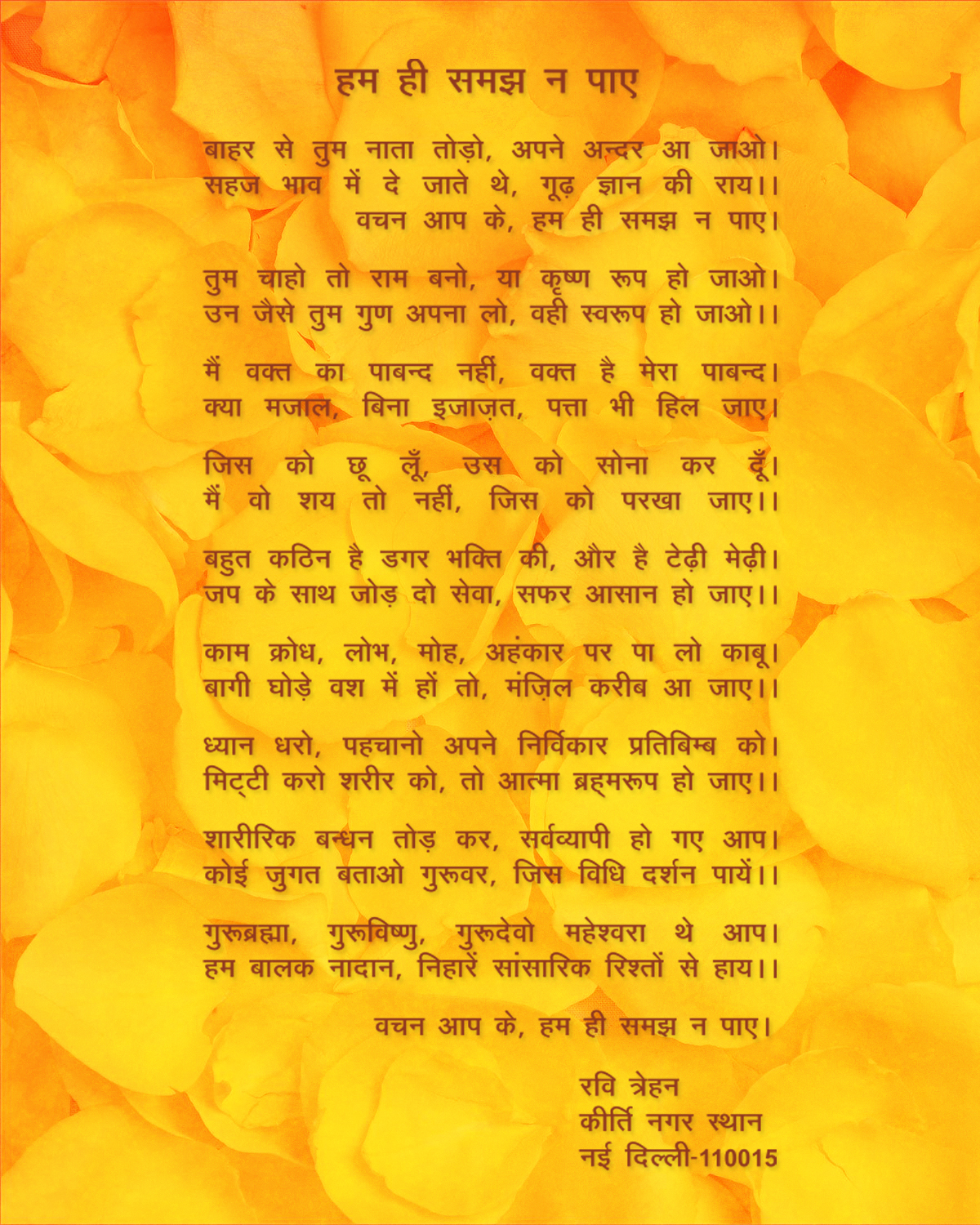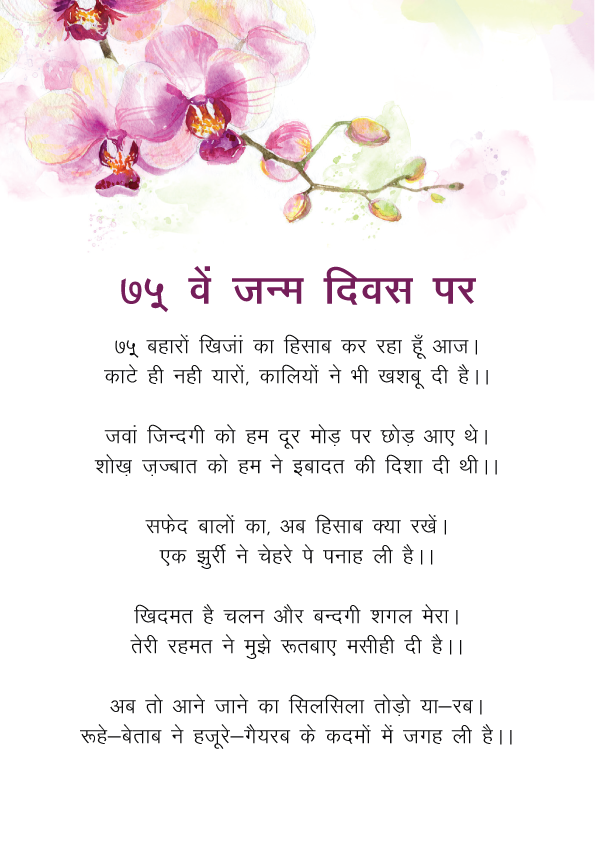GURU – This one word has such a vast, such a deep and such a profound meaning that it is very difficult for any person to elaborate it. No language in the world has the capacity to translate it and no amount of words has the capability to explain it. The stature of Guru is so exalted that even if one surrenders completely, he is only able to touch the tip of His toes – where Guru has His feet, shishyas or devotees bow their heads in reverence. In other words, Sadguru’s lower-most level (i.e., His lotus feet) is the higher-most level (i.e., the head) of shishyas. As such, the latter are just not in a position to describe the overall stature of a Sadguru.
The translation of the word Guru that one comes across in the English language is a ‘Teacher’ or a ‘Master’. These words can at the most be understood in the commonly used sense of the word, but do not touch anywhere near the ambit of its entirety. The term Guru is one of the most intractable terms in Hindu philosophy – a philosophy which is the oldest and has a unique living tradition of over 5,000 years, if not earlier.
Sant Kabir, the well-known Indian saint and a highly exalted soul, in one of his dohas (couplets) expresses his inability to describe Guru. He says, even if he takes the entire earth as paper, the waters of all the oceans to serve as ink and he makes kalams (traditional writing instrument) out of all the trees in the world, yet he would not be able to describe the full meaning and glory of the word ‘Guru’. Such is the degree of reverence a shishya (or a devotee) has for his Guru that is reflected in the following doha of Sant Kabirji:
Guru Gobind dou khade, ka ke lagoon paaye
Balihari Guru aapne, jin Gobind diyo milaye
Guru and Gobind (God) are both objects of reverence and worthy of worship, but Sant Kabir puts ‘Guru’ on a higher pedestal than God. He says that if both Guru and God together condescend to give him darshan, he would first touch the lotus feet of his ‘Guru’ before seeking blessings from God, because it is He (Guru) who showed him the way to God.
The word ‘Guru’ is derived from two roots – ‘Gu’ and ‘Ru’. ‘Gu’ means darkness and ‘Ru’ means light. The one who dispels darkness and takes you to light is a Guru. The one who dispels the darkness of sensuous pleasures and pains (which are temporary and fleeting) and takes you to the light of eternal bliss (which is permanent and everlasting) is a Guru. The one who helps you to break the shackles of birth, death and rebirth and attain salvation is a Guru.
Before we were born, our parents existed, our neighbours existed, our society existed. We are born into a stream of existence and this cycle of birth, childhood, youth, old age, death and rebirth continues. The quality of this cycle (success or failure) may differ from one individual to another, depending upon his past and present ‘karmas’ , the birth that he takes in a particular family (rich or poor), his upbringing, his education and his environment. Depending upon our past and present ‘karmas’ and ‘sanskars’, we take birth again and again in any of the eighty-four lac species (yonis) and keep drudging and travelling in the darkness of ignorance from one birth to another, forgetting wherefrom we came and what our ultimate destination is – i.e., salvation.
Mahatma Kabir prayed. ‘Oh God, save me from two fires – one, hanging upside down for nine months in my mother’s womb, and second, when my corporal frame is consigned to the flames soon after the soul leaves the body.
Having created mankind along with the spirit of sacrifice at the beginning of creation, the Creator, Lord Brahma, gave them the following advice: “May you multiply and prosper by this spirit of sacrifice (free from attachment), may this yield the enjoyments you seek. Foster each other with a sense of sacrifice and let the Gods be gracious to you. Fostering each other unselfishly, you will attain the highest good. Fostered by sacrifice, the Gods will surely bestow on you unasked all the desired enjoyments. He who enjoys the gifts bestowed on him without sharing them with others is undoubtedly a thief.”
(Bhagvad Gita, Chaper III, shlokas 10-12)
The object of this advice must have been to ensure peace, progress, prosperity and tranquillity for the entire mankind.
Then the ancient sages and seers of this wonderful land (Bharat) conceived and expounded the doctrine of ‘Vasudhaiva Kutumbakam’ (this entire world is one family and we are members of this global society) in order to elevate human dignity and universal brotherhood for the attainment of peace and prosperity.
But as the human race multiplied, somewhere down the line we forgot the divine advice and the message of our learned rishis. We became more and more materialistic and self-centred. In the process, we developed a tendency to construct walls around us – walls of ego-centric desires. That is how we restrict
That is how we restrict our vision, our thoughts, our actions, through the identification of oneself with the body. Myself, and those related to me through this body, set the limits of my expansion. Engrossed in the material belongings, what we see within those walls, we think belongs to us. And anything unknown to us and outside those walls, we regard as a stranger and as an enemy. This identification with the body not only builds walls around me, but cuts me off from others who are beyond these little walls. In the words of Rousseau, the famous French philosopher, “damn that man who said: this is mine and that in thine – thus sowed the seeds of self-centredness and a feeling of jealousy and animosity”.
Guru plays the pivotal role in reminding us of Divine advice, teaches us the art of living a balanced life with restraint and stability of mind. He is the one who brings about awareness that actions (karmas) performed under the influence of senses give rise to sensuous pleasures and pains, which are transitory and fleeting. He guides you how to discipline and bring under control the five wild horses – ‘kama’ (passion), ‘krodha’ (anger), ‘lobha’ (greed), ‘moha’ (emotional attachment) and ‘ahankara’ (ego) – and helps you to take the chariot of your life in the right direction of inner peace and tranquillity. He brings about a realization in you that over-indulgence in sensuous objects give rise to Tamoguna which results in regret, remorse, sorrow and loss of peace. Like a father, Guru holds your little finger and conditions you to fearlessly travel from the illusory material world to the realms of spirituality, so that you could be one with the Real One and realize the ultimate truth – i.e., God.
He tells you that the actions (karmas) performed under the influence of mind and intellect are obsessed by desire and devoted to material gains. Such actions are generally performed to serve the self and those closely related to the self, through this body. This gives rise to Rajoguna. The more you seek material pleasures, the greater is the desire to have still more, and you are caught in a mirage (mrigtrishna). The mind has a tendency to swing like the pendulum of a clock – sometimes towards senses and at others to the intellect. Therefore, it has to become steady.
Where are you lost, my son, says the Guru, with all his love and tenderness. You are not the body, you are the soul. You existed before entering into this body and will remain even after leaving this body. Illuminate yourself. Perform actions under the influence of conscience (antaratman), which is an inseparable part of ‘Paramatman’. Detach yourself from the outside material world and enter into the inner world of consciousness. Be enlightened, be equanimous and free from attachment. He who is unattached, his mind is stable. Sensuous objects cease for him, walls of ego-centric desires do not exist for him. He belongs to the entire world and the entire world belongs to him – Vasudhaiva Kutumbakam.
Under the guidance of the consciousness, you would realize that God resides in every human being, who is like a mobile temple worthy of worship. Make an effort to perceive Him in every human being that you come across. To serve humanity is the best way to worship God. The shortest path to attain salvation is to render service to his creation – the mankind. Remember, you are not obliging people by rendering service to them. On the contrary, they are obliging you by giving you an opportunity to serve them and helping you to increase the bank balance of your ‘karmas’ with the Divine Banker, the Supreme Lord. Serve them with a sense of dedication and sacrifice and earn the prayers of ‘Daridra Narayan’. When our act of ‘sewa’ (service) is performed with love and compassion and filled with feeling (bhavana), then the resultant contentment and happiness is gratifying both to the giver and the recipient in an infinite measure.
To enable us to understand the stature and level of Sadguru in its entirety, our holy scriptures have given us the following Mahaguru mantra:
Gurur Brahma, Gurur Vishnu,
Gurur Devo Maheshwara
Guru Sakshaat Par Brahma,
Tasmaye Shree Guruve namah
Guru and God are two different names of the same ultimate power. It is equally true that when we worship God in the form of Guru, we place Him on a higher pedestal. We are rewarded or punished by God by virtue of our own karmas (actions). But when we worship God on the pedestal of Guru, who is benevolent and bakshanhaar (the one who gives and forgives generously), we may be amply rewarded for our good karmas, and punishment condoned or curtailed for our sins committed innocently or otherwise.
Such is the abundance of love and affection showered by a ‘Sadguru’ that you can keep diving into the ocean of that bliss for as long as you wish to. In a simple and modest manner, he would tell you how clear is the path and show you the shortest route to salvation – i.e., practise ‘Japa’ (inward recitation of mantras), ‘Nishkaam Sewa’ (rendering selfless service to mankind), and ‘Dhyaana’ (meditation).
O my revered Guru Dev
Thou art the lofty imagination
Of the Lord Himself;
My salutations to thee,
My salutations to thee.
Tasmaye Shree Guruve Namah

